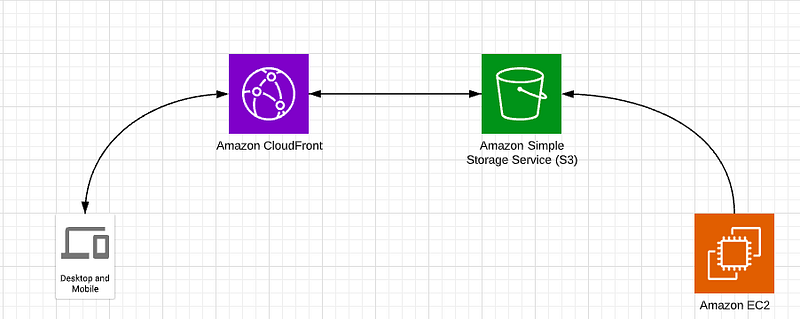

Caching API Response At Edge
By Rajesh krishnakumar- “Go above and beyond!”
The title idea kicked in when I saw our APM platform- a static/config api- getting hit 1200req/sec. I thought let’s move this api to the edge so the server will be free of TCP connection, memory, and computing power. This led me to explore how to serve api from edge.
After a lot of front and back, I decided to serve the static/config api response through s3.
Hence, I decided to use S3 for distribution.

I’m was ready with the CDN endpoint, but then my manager suggested we give a load test and check the stability. We saw the response was higher than we expected. Hence we were disappointed. I decided to send a mail to the AWS team as we are using CloudFront CDN to understand the problem.
Traditional load testing methods don’t work well with Cloudfront. The reason is that CloudFront uses DNS to balance loads across geographically dispersed edge locations and within each edge location. When a request for content is sent to CloudFront from a client, the client receives a DNS response that includes a set of IP addresses. If you test by sending requests to just one of the IP addressed that DNS returns, you are testing only a small subset of the resources in one CloudFront edge location, which doesn’t accurately represent actual traffic patterns. The performance of the small subset of CloudFront servers may be degraded depending on the volume of data requested.
To conclude, CloudFront is designed to scale for viewers that have different client IP addresses and different DNS resolvers across multiple geographic regions.
To perform load testing that accurately assesses CloudFront performance, we recommend that you do all of the following:
Aws team helped us with the load test and we are satisfied with the response time.
To summarize, we have created CDN distribution with s3. S3 will have our response JSON. whenever we need to invalidate we upload new JSON data and invalidate CDN distribution.
Using this approach the server will be free of TCP/HTTP connection, memory, and computing power.
Author
Rajesh Krishnakumar
Reviewer
Muthukumar K
Editor
Mridula Saravanan
We at CaratLane are solving some of the most intriguing challenges to make our mark in the relatively uncharted omnichannel jewellery industry. If you are interested in tackling such obstacles, feel free to drop your updated resume/CV to careers@caratlane.com!

Leave a Reply